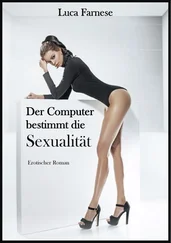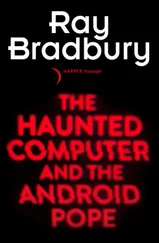“Basically, what we did was play games on the computer,” she remembers of those early days with the clunky, loud teletype terminals. It was a grand beginning. But it was only a beginning. Compared with the color video screens and sound capabilities of today’s computers, teletype terminal technology was closer to a telegraph machine than what we now know as a personal computer. The equipment needed to be upgraded—an expensive undertaking. And it still cost money to operate the computer training as well as the classes for the children.
Joyce went to her school district and asked for funds. They were reluctant to give her tax money because the computer education curriculum she and her friends had set up hadn’t been properly evaluated. So Joyce went back to the Hall and said, “We need an evaluation tool”—a way of testing whether the new kind of curriculum had a positive effect on students. Joyce volunteered to help take over some of the administrative burden of developing and evaluating the curriculum so that the tool could be written and the volunteers could get a computer and math lab funded.
She started hanging around the computer room at the Hall, learning and teaching not only children who were attending the Hall’s other programs, but also her fellow volunteers. At the end of the summer the people in charge of the Hall asked her to continue her work with them on a part-time basis. The math lab and the Hall never received the evaluation tool that got Joyce into the Hall as a staff member.
In 1975, Joyce began working as director of Lawrence Hall of Science’s computer education project, which involved introducing schoolchildren to the principles of computer programming. In 1978, she was instrumental in getting some state-of-the-art replacements for the old teletype terminals—a dozen Apples. By the time she left in 1979, the Hall was teaching 30,000 to 40,000 people a year how to use computers, and those people included everyone from very young children to senior citizens.
Back in 1978, while Joyce was still at the Hall, a group of people from Children’s Television Workshop (CTW)—the creators of “Sesame Street”—came to the Hall, looking for help with an electronic theme park they wanted to create, to expand their educational efforts beyond television programs. The park, to be called Sesame Place, was intended to be something like Disneyland—a place for parents to bring young people for the sheer fun of it, but with a technological and education theme. The CTW people knew they wanted to use electronic components, but they weren’t sure what that might mean. They had talked to Atari and realized that arcade games weren’t what they wanted. When they saw what was going on at the Hall, they signed up Joyce and her colleagues as consultants to CTW’s Sesame Place project.
A year later, in June 1979, impressed with her work as a consultant, CTW asked Joyce to come to New York and direct its children’s computer park project. They still weren’t certain about which direction the project ought to take, but they knew that with Joyce in charge it would crystallize. They were asking a lot from Joyce, who had two children in school, a husband who couldn’t have his work at the university, and a physical handicap—muscular dystrophy—that would make life in New York City difficult.
Joyce still remembers how scary it was to make that decision: “I had children and a husband who couldn’t just up and leave. I had married very young, so I literally had never lived on my own. I had never lived in a metropolitan city. I am disabled. I thought that the whole idea was crazy. I also thought it was the opportunity of a lifetime for someone with my background and my interests. At the Hall, we were able to introduce thirty or forty thousand people to computers every year. Sesame Place was expected to draw a million people a year. My husband told me what I had known all along—that I had to do it or I would always regret it.”
Joyce’s idea, which CTW approved, was to create a permanent large-scale version of the pioneering computer education project she had directed at the Lawrence Hall of Science. Collecting the best of the computer educators and programmers that she had met over the years, and commuting between New York, Berkeley, and the site of the park in Langhorn, Pennsylvania, Joyce gave shape to the project. She was originally hired to oversee the production of the software. When she arrived and asked where the hardware person was, CTW told her that the person they had hired wasn’t able to take the job after all. Did she think she could do that too? She did. Ten months later the park opened, with more than fifty microcomputers and specially designed educational games.
In those days, Joyce was one of a small, dedicated, growing network of parents, educators, and microcomputer enthusiasts who thought that computers could revolutionize education the way they were transforming business and entertainment. Because of that, she stayed with CTW for another year to see that the software her group had produced for the park reached the commercial market. She went to software publishers such as Science Research Associates, Macmillan, Random House, Milton Bradley, and Personal Software and rounded up contracts for what became Children’s Computer Workshop Software in 1980. Originally a division of CTW, it has since become a separate corporation that was renamed again—it is now called Children’s Television Workshop Software.
In 1981, Joyce moved back to California. With a track record of more than sixty programs produced by her CTW software team, and with her reputation among the people who were looking for high-quality educational software (including, but not limited to, the publishers she met in her CTW work), she felt that now she could build her own production team and turn out products on her own. Like many of the other software developers who came into the business in the early 1980s, Joyce saw the computer as having real potential to become a device that could help bring about social change in general.
In her view, computers could be particularly useful in bringing about significant social change in the field of education. The dream she had for her production group was an outgrowth of the same feelings that had led her to start a math lab in her children’s school eight years prior. She dreamed that her group’s software could bridge cultural worlds that in the past had been separated. As she said to me recently: “I could see that the machines were getting smaller and more powerful and less expensive, and the software was making the computer more accessible to people who weren’t engineers, but I didn’t see many people building bridges between the potential of the computer and the artists, musicians, literary people.”
When I asked her to describe her notions of what children or artists or musicians would want to do with computers, Joyce answered by first pointing out that personal computers were initially introduced to businesspeople because of spreadsheets—programs that allow business people to ask “what if’ questions and thereby make financial predictions. Similarly, Joyce said, “The magic of a computer to an artist or a child is the ability to draw something on the screen and play ‘what if.’ What if it’s purple or green or blue? What if it’s bigger here or smaller there? What if I stretch it or shrink it? You an do these things with paper, pencil, and conventional media, but it’s so much slower and tedious that it isn’t worth playing. The computer eliminates those barriers to the creative process.”
She firmly believes that this kind of systematic imagining is as important to the fields of science and business as it is to creative thought: “That’s what research is all about. That’s what people are doing in universities—thinking about ‘what ifs.’ If kids can be taught to play ‘what if games, then they can build their intuitions and begin to trust themselves when it comes to other kinds of intellectual exploration—because they have already played that kind of game. This is discovery, not rote learning, and it is a far more powerful kind of learning because children do it naturally, on their own.”
Читать дальше










